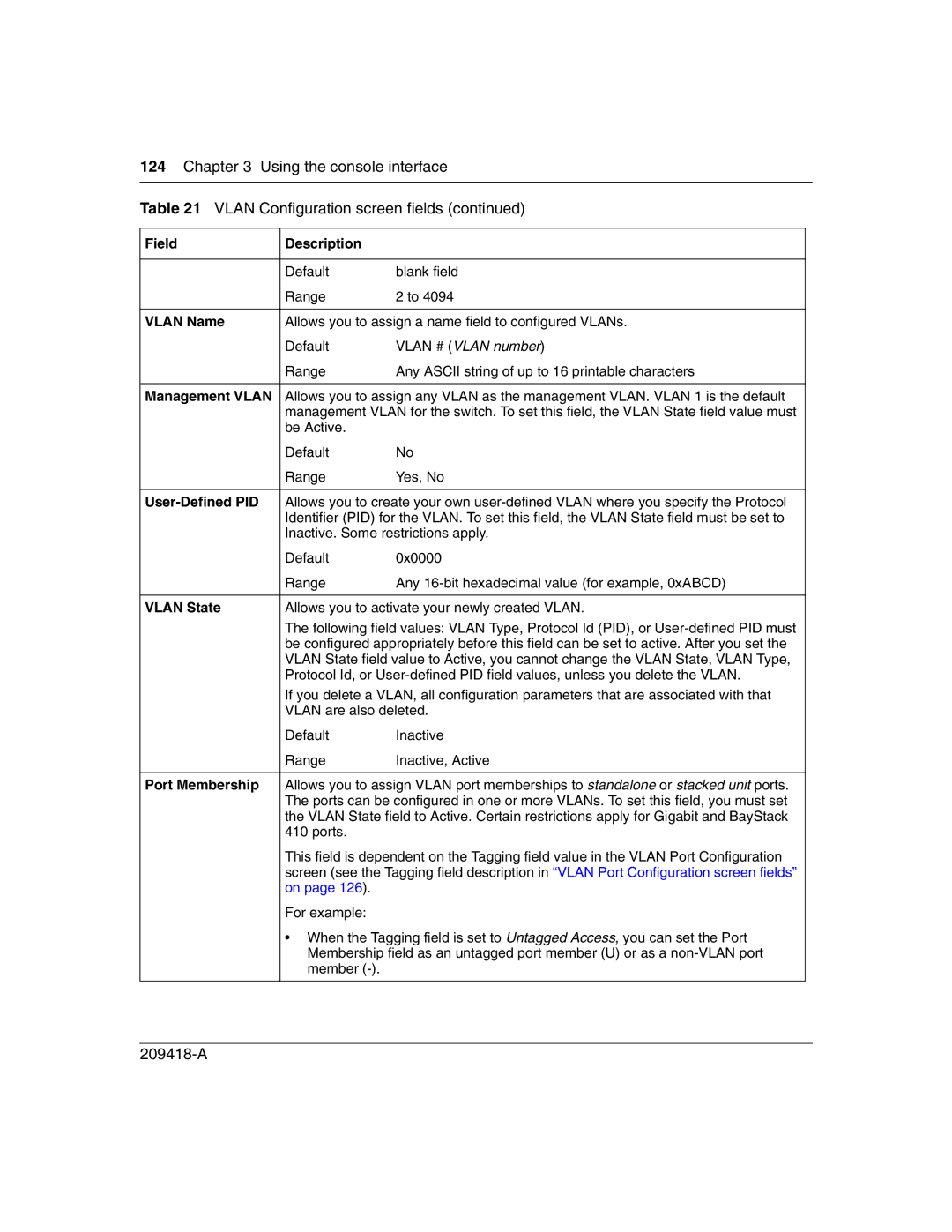
124Chapter 3 Using the console interface
Table 21 VLAN Configuration screen fields (continued)
Field | Description |
|
|
|
|
| Default | blank field |
| Range | 2 to 4094 |
|
| |
VLAN Name | Allows you to assign a name field to configured VLANs. | |
| Default | VLAN # (VLAN number) |
| Range | Any ASCII string of up to 16 printable characters |
|
| |
Management VLAN | Allows you to assign any VLAN as the management VLAN. VLAN 1 is the default | |
| management VLAN for the switch. To set this field, the VLAN State field value must | |
| be Active. |
|
| Default | No |
| Range | Yes, No |
|
| |
| Allows you to create your own | |
| Identifier (PID) for the VLAN. To set this field, the VLAN State field must be set to | |
| Inactive. Some restrictions apply. | |
| Default | 0x0000 |
| Range | Any |
|
| |
VLAN State | Allows you to activate your newly created VLAN. | |
| The following field values: VLAN Type, Protocol Id (PID), or | |
| be configured appropriately before this field can be set to active. After you set the | |
| VLAN State field value to Active, you cannot change the VLAN State, VLAN Type, | |
| Protocol Id, or | |
| If you delete a VLAN, all configuration parameters that are associated with that | |
| VLAN are also deleted. | |
| Default | Inactive |
| Range | Inactive, Active |
|
| |
Port Membership | Allows you to assign VLAN port memberships to standalone or stacked unit ports. | |
| The ports can be configured in one or more VLANs. To set this field, you must set | |
| the VLAN State field to Active. Certain restrictions apply for Gigabit and BayStack | |
| 410 ports. |
|
| This field is dependent on the Tagging field value in the VLAN Port Configuration | |
| screen (see the Tagging field description in “VLAN Port Configuration screen fields” | |
| on page 126). |
|
| For example: |
|
| • When the Tagging field is set to Untagged Access, you can set the Port | |
| Membership field as an untagged port member (U) or as a | |
| member |
|
|
|
|
